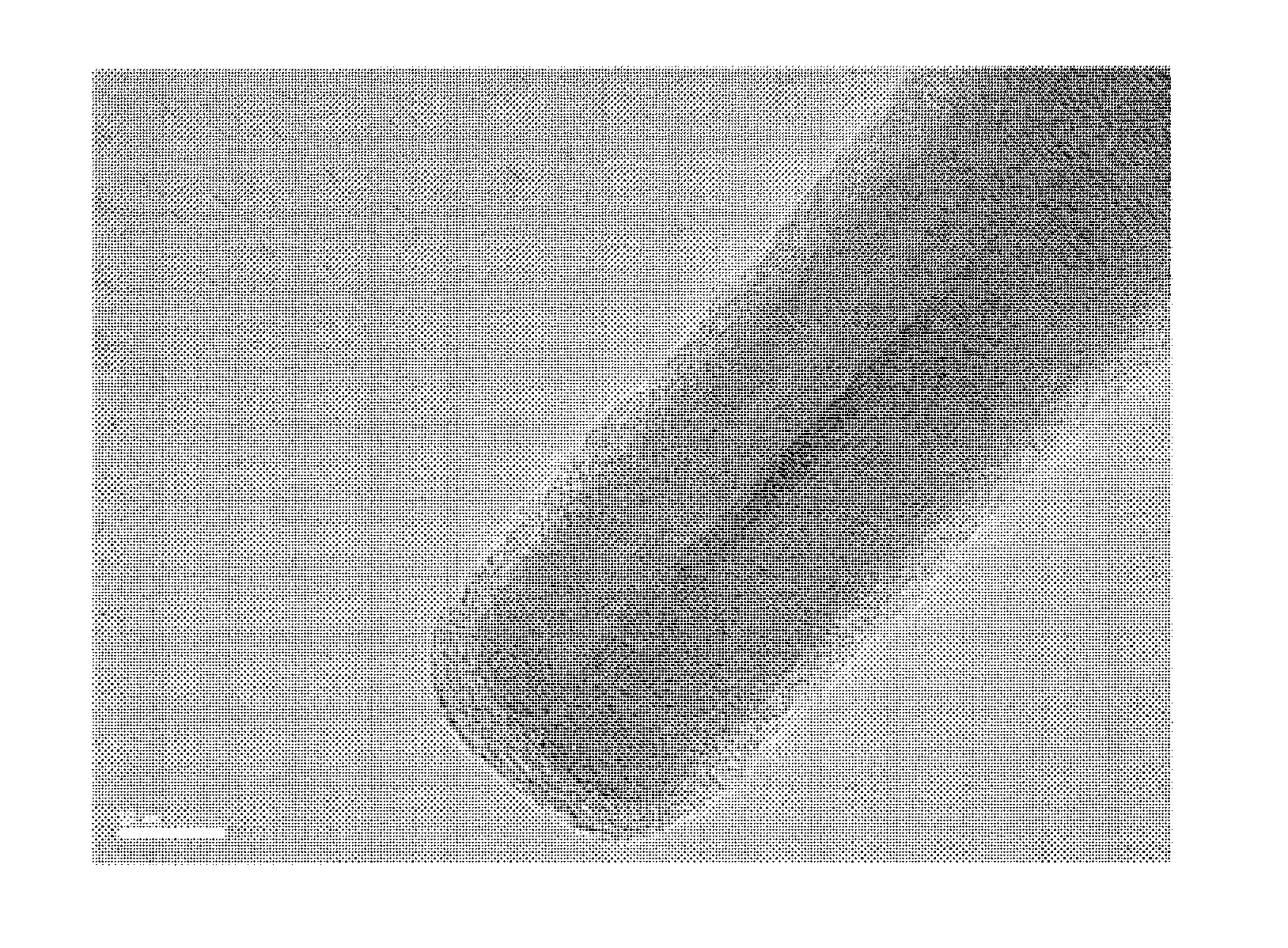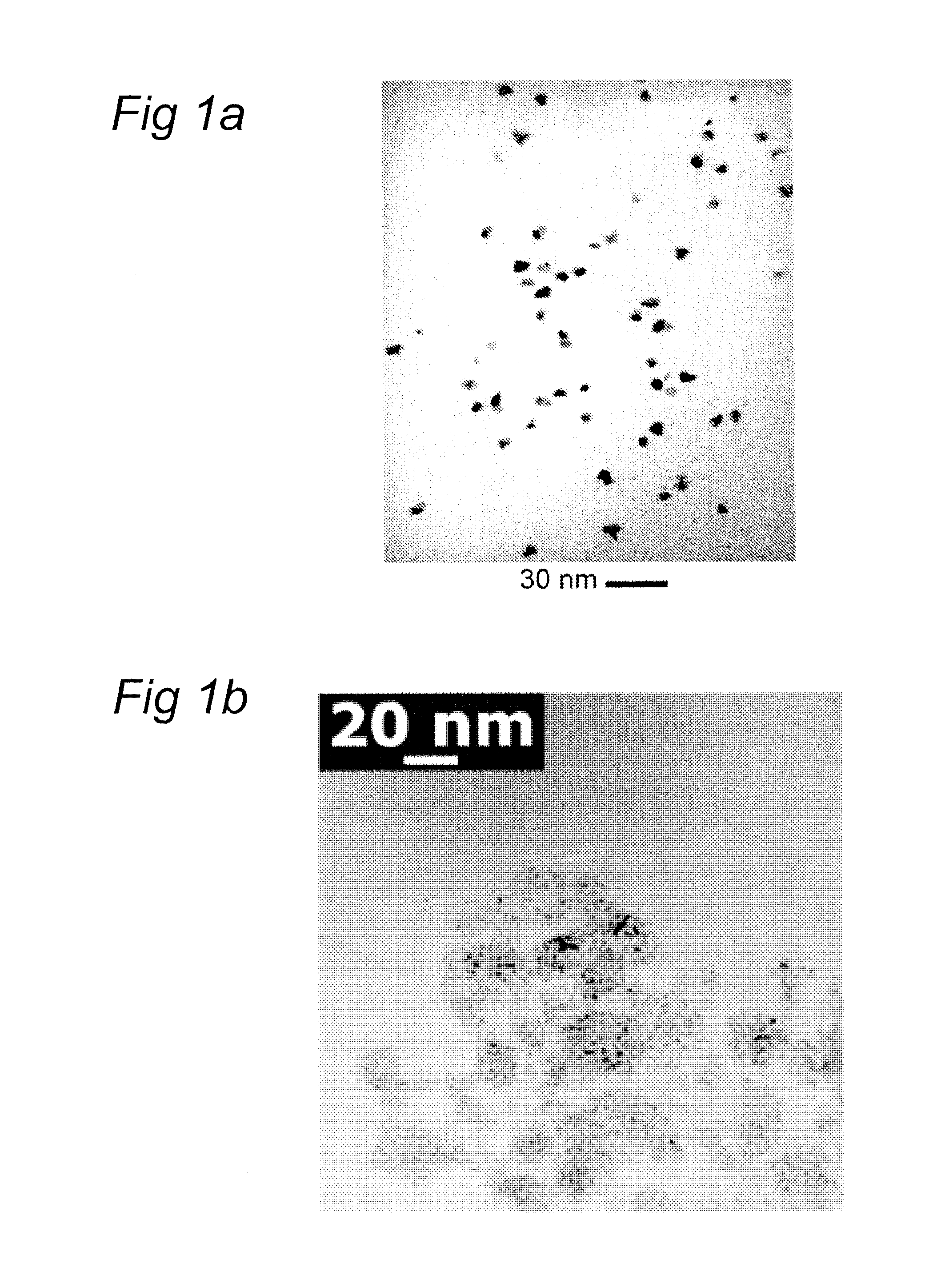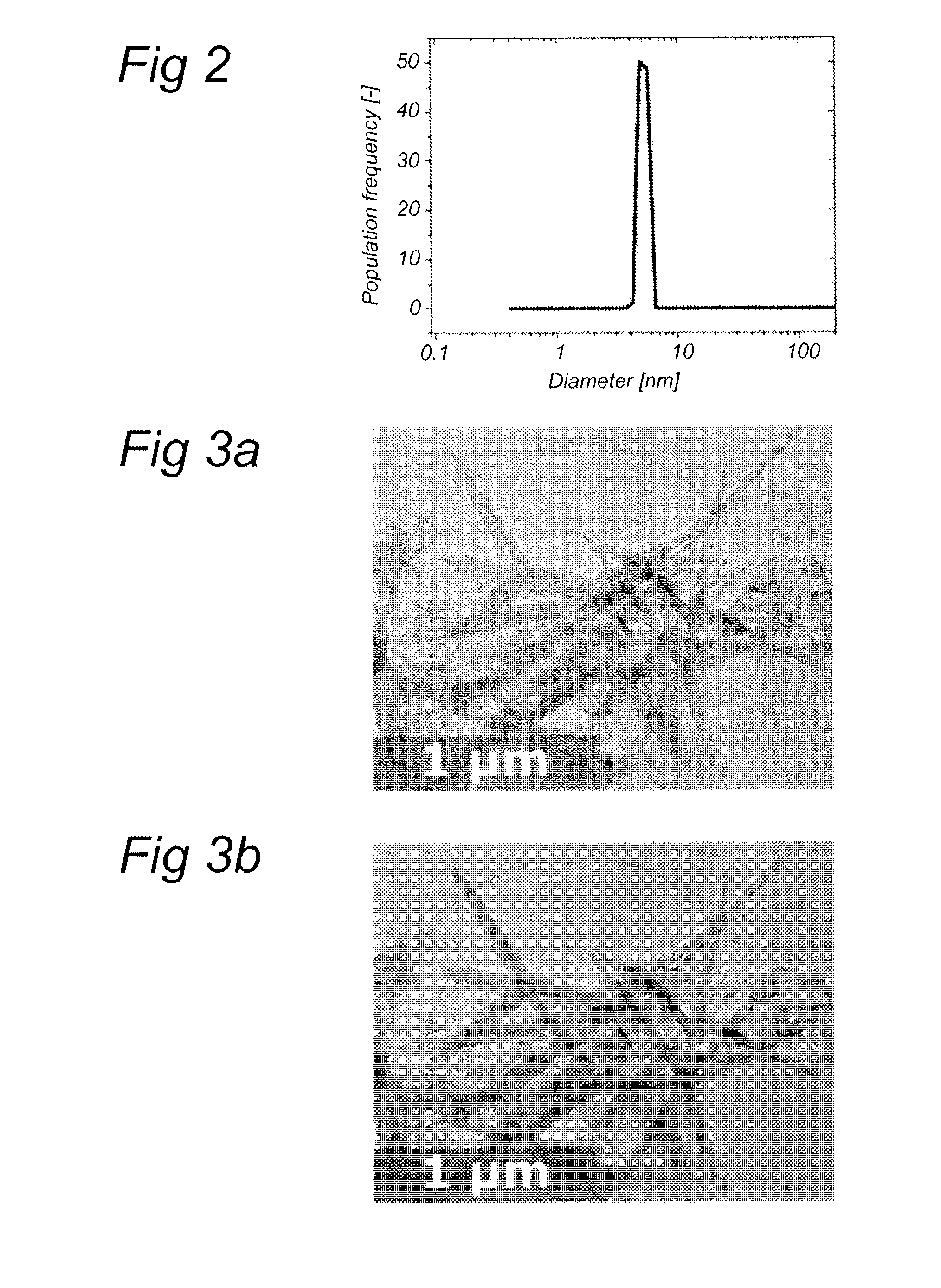Carbon nanostructures and networks produced by chemical vapor deposition
a carbon nanostructure and network technology, applied in the field of nanostructures of carbon, can solve the problems of limited catalyst efficacy and conductivity properties, less suited to many applications, and more vulnerable to desorption, and achieve good control of particle size and monodispersity, reduce impurities during cvd, and high density
- Summary
- Abstract
- Description
- Claims
- Application Information
AI Technical Summary
Benefits of technology
Problems solved by technology
Method used
Image
Examples
example 1
Carbon Nanotube Synthesis on Platinum Nanoparticles by CVD
example 1a
Synthesis of Platinum Nanocatalysts
[0050]Two micro-emulsions were prepared after adding a mixture of a fluorocarbon surfactant [perfluoro(4-methyl-3,6-dioxaoctane)sulphonate] and n-hexanol to an aqueous solution. The first micro-emulsion contained the platinum precursor hexachloroplatinic acid. To the second micro-emulsion the reducing agent hydrazine was added. The amount of reducing agent was set at ten times the concentration of the platinum complex in order to obtain complete reduction upon mixing. The synthesis of nanoparticles was carried out by mixing equal amounts of the two micro-emulsions:
H2PtCl6(aq)+N2H4(aq)->Pt(s)+6H++6Cl−+N2
[0051]The platinum nanoparticles were characterized using transmission electron microscopy (TEM) and dynamic light scattering (DLS). Transmission electron microscopy (TEM) was accomplished using a Philips CM30T electron microscope with a lanthanum hexaboride (LaB6) filament operated at 300 kV as the source of electrons. Samples were mounted on a Qua...
example 1b
Synthesis of Carbon Nanotubes
[0054]The micro-emulsion containing 10 mM Pt precipitate was poured on a Copper grid, which was placed at the bottom of a reactor. After increasing the temperature to 973K (10 K / min) under a flow of nitrogen at 100 ml / min, ethylene gas (C2H4) was introduced at 10 ml / min into the reactor. The gas mixture passed through the reactor over the nanoparticles for 30 minutes at a constant temperature of 973K. Once the dwell step was over, the synthesis gas flow was stopped, and the reactor was cooled down to room temperature under nitrogen flow at 100 ml / min.
[0055]The carbon nanotubes thus obtained were characterized using electron microscopy (FIGS. 3-8), energy dispersive x-ray spectroscopy, dielectric spectroscopy (FIG. 9a), mechanical spectroscopy (FIG. 9b), Raman spectroscopy (FIG. 10) and nitrogen sorption (FIG. 11).
[0056]The tubes could be tuned to have a diameter from 5 to 50 nm and lengths from 100 nm to 3 microns. Each experiment resulted in nanotubes u...
PUM
| Property | Measurement | Unit |
|---|---|---|
| particle size | aaaaa | aaaaa |
| particle size | aaaaa | aaaaa |
| size | aaaaa | aaaaa |
Abstract
Description
Claims
Application Information
 Login to View More
Login to View More - Generate Ideas
- Intellectual Property
- Life Sciences
- Materials
- Tech Scout
- Unparalleled Data Quality
- Higher Quality Content
- 60% Fewer Hallucinations
Browse by: Latest US Patents, China's latest patents, Technical Efficacy Thesaurus, Application Domain, Technology Topic, Popular Technical Reports.
© 2025 PatSnap. All rights reserved.Legal|Privacy policy|Modern Slavery Act Transparency Statement|Sitemap|About US| Contact US: help@patsnap.com



